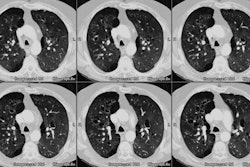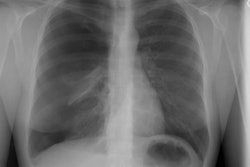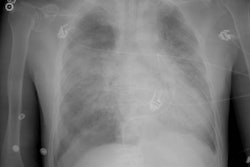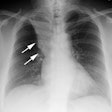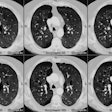Hypertrophied bronchial artery at thin-section CT in patients with bronchiectasis: correlation with CT angiographic findings.
Song JW, Im JG, Shim YS, Park JH, Yeon KM, Han MC
PURPOSE: To evaluate hypertrophied bronchial arteries on thin-section computed tomographic (CT) scans in patients with bronchiectasis by using CT angiographic correlation. MATERIALS AND METHODS: Spiral CT angiography was performed prospectively in 14 patients (eight men, six women; age range, 34-71 years) with bronchiectasis who were suspected of having bronchial arterial hypertrophy at thin-section CT (performed without contrast medium). The inclusion criteria were tubular (in six patients) or nodular (in 14 patients) areas of soft-tissue attenuation that had an appearance unlike that of lymph nodes at thin-section CT and that were within the mediastinum and around the central airway. These findings were subsequently correlated with the spiral CT angiographic findings. RESULTS: At comparative analysis of thin-section CT scans and CT angiograms, seven of the eight (88%) tubular lesions and 19 of the 36 (53%) nodular lesions in the mediastinal soft tissue were proved to be hypertrophied bronchial arteries. All of the six (100%) tubular and 19 of the 21 (90%) nodular lesions around the walls of the main (primary) and lobar bronchi were hypertrophied bronchial arteries. In eight (57%) patients, CT angiograms showed 11 intraluminal protrusions caused by hypertrophied bronchial arteries in the main bronchi, lobar bronchi, or both. CONCLUSION: Nodular and tubular structures in the mediastinum and around the central airway on thin-section CT scans in the patients with bronchiectasis are suggestive of hypertrophied bronchial arteries. Recognition of the hypertrophied bronchial artery can be critical for the bronchoscopist.
